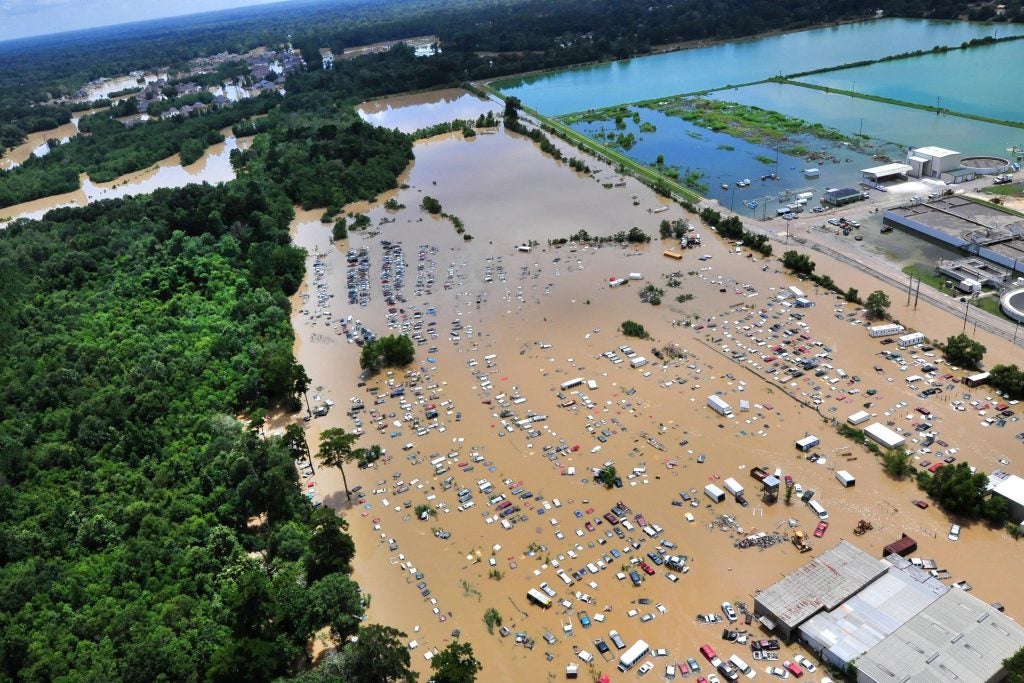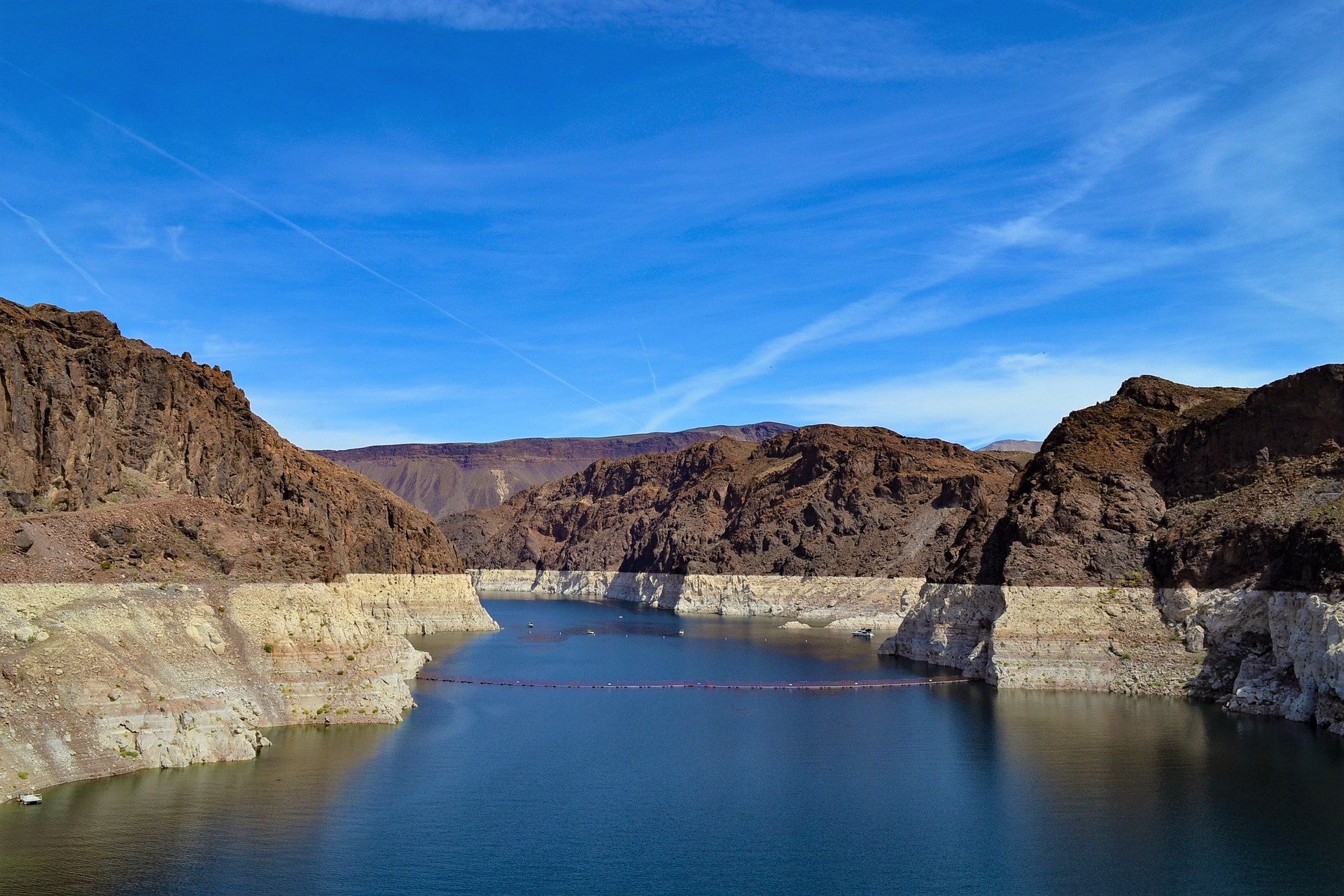
Aerial view of business port with Shore crane loading containers in freight ship.
Most Americans hadn’t thought about the importance of ports until pandemic-driven disruptions in the global supply chain created delays and uncertainty about the delivery of the goods we count on in our homes, schools, businesses and beyond. But people who live in the communities near ports, where last century’s fossil fuel-powered equipment belches out harmful air pollution, know better. They’ve been burdened with the very real costs of infrastructure that’s stuck in the past.
President Biden’s Bipartisan Infrastructure Law represents an unprecedented investment in the future. The deal advances something for everyone, promising to deliver clean, reliable energy, create good manufacturing jobs, expand public transit, and provide a national network of chargers for electric vehicles. And of course it specifically sets aside $17 billion to improve ports, with $450 million dedicated to replacing the outdated equipment that often creates the largest emissions harming our climate and our health. The Biden administration, including Department of Transportation Secretary Pete Buttigeg and Environmental Protection Agency Administrator Michael Regan, has consistently committed to taking the necessary action on climate change and environmental injustice, prioritizing equity for those communities denied the full protections of our clean air and water laws.
Ports are poised to reimagine vital parts of our infrastructure and position themselves as solutions-oriented leaders. Here’s how they can do it.
Ports can do their part to meet our shared climate goals
The latest report from expert scientists with the Intergovernmental Panel on Climate Change shows that many of the harms caused by the pollution warming our atmosphere are already here. Worse, more warming makes it more likely that we will suffer more frequently from severe weather events. Recovery will cost more, and it will be more unequal. Our health, safety, and livelihoods stand to be threatened by more floods, droughts, wildfires, diseases, crop failures, and the collapse of ecosystems. We must not only do all we can to eliminate climate pollution, but adapt our systems to a new reality.
That includes how we move goods around the globe. Diesel-fueled cargo ships are responsible for a billion tons of climate pollution every year. When these ships arrive at ports, their containers are transported between terminals, warehouses, and railyards with other diesel-fueled equipment that creates even more carbon dioxide, as well as PM 2.5, NOx, and other harmful pollutants. Our transportation system is the largest source of the pollution changing our climate; 90 percent of ships, trucks, trains, and other vehicles are powered by fossil fuels.
Ports have influence here, with the ability to accelerate the retirement of these less-efficient ships, drayage trucks, switcher trains, dredges, and other diesel-powered cargo-handling equipment in favor of zero-emissions ones on their way to full electrification. The shorter distances and fixed routes that trucks and trains travel make them ideal to electrify, for one. Such older equipment represents the largest sources of the emissions at Port Houston, for another, underscoring just how significant the benefit that replacing it would have. Port Houston and the country’s 19 other largest ports should commit to moving 100 percent of container traffic along zero-emissions supply routes by 2035.
Ports can rebuild their relationships with nearby communities
It’s not only about eliminating climate pollution. Ports’ emissions and environmental impacts have been hard to track. Ports must now commit to being good neighbors — and that starts with protecting public health.
Investing in zero-emissions supply routes would create near- and long-term benefits for the health and safety of people who live, work, and go to school in portside communities, many of which are overburdened with disproportionate amounts of pollution. Children living within two miles of the Houston Ship Channel, for example, are 56 percent more likely to develop a kind of leukemia than children living 10 miles away. Cancer rates in Manchester, a portside community in the city’s East End, are 22 percent higher than the city overall.
Infrastructure doesn’t have to divide us. Repairing it must mean more than expanding freeways or dredging waterways; it means improving outcomes for people in communities with equity disparities. With ports, this could mean making funding contingent on increased local enforcement of anti-idling regulations, for example. Listening to the specific aspirations of nearby communities, port leadership should work to redraw truck routes, redesign intersections for safety, and relocate their parking lots away from people’s homes.
Ports can change how they make decisions and commit to a solutions-oriented public engagement process that brings many stakeholders — both industry and community — to the table. Together, with state and federal departments of transportation, ports can retool their decision-making process to ensure that 40 percent of the new infrastructure funds, promised in the Biden administration’s Justice 40 initiative, create benefits for the communities that have been overlooked historically.
Ports must see themselves as parts of our cities
For too long, ports have been thought of as the delivery entrances to our cities, but they are the front doors in a global economy. I saw this firsthand. In late February 2022, I gathered with shipping and logistics experts at the Trans-Pacific Maritime Conference in Long Beach, California. It was an invigorated, spirited atmosphere. The nearby Port of Long Beach had approved a Clean Air Plan with a pledge to get to the zero-emissions movement of goods by 2035. The neighboring Port of Los Angeles has the same goal. The Port of San Diego intends to approve a plan this summer to guide their transition to a fleet of zero-emissions trucks by 2030. I’ve since returned home to Texas, where the Port of Corpus Christi and Port Houston on the 50-mile-long Ship Channel talk publicly and proudly about their ambitions to expand. With the Biden administration’s investment, they have the opportunity to join forward-looking peers and steer themselves – and all of us, too – toward a cleaner, healthier future.














